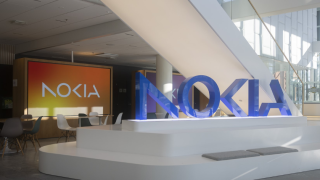DTN-X is the first platform to introduce 500G super-channels to the market. It is a large-scale chassis that supports up to 5Tb of both switching and transmission.
Today’s common capacity denomination is 100G and we allow our customers to bundle 100G into 500G, giving them the ability to more efficiently manage their network.
The industry is talking about demonstrations of 200G or 400G on a line card and Terabit super-channels, but none are in production and none of them are doing it on a single card.
We brought DTN-X to market a little over a year ago and 39 customers have made commitments to us, meaning the company as a whole now has 126 customers. A good chunk of those 39 are new customers.
Would you attribute your strong Q3 financial results to DTN-X?
DTN-X is clearly driving our growth. We are continuing to sell DTN and we actually had three new customers for that product for the last three quarters in a row.
We’ve historically been a one-product company with DTN, but now we’re a two-product company, with lower-capacity customers continuing to buy DTN and large-capacity customers buying DTN-X.
I think the quarter was exceptionally strong, because of our ability to sell two products.
Our guidance for Q4 expects we will grow about 23% year-on-year. In an industry that’s probably growing about 10%, we are more than doubling the pace of industry growth, which means we’re winning a lot of customers and picking up a lot of market share.
Do you see a lot of competition in the optical transport field?
There is a lot of competition, probably too much. I think our industry is overserved, but that will fix itself over time.
Right now our primary competitors are Ciena, Huawei, Alcatel-Lucent, ZTE, Coriant and a smattering of other smaller players. Cisco is also getting more interested in the optical space, so it’s a very large group of competitors that will need to be rationalised. I think it will consolidate and I think it will clean itself up, but it won’t happen in a short period of time.
What we do better than anybody else is focus entirely on customer care. We believe we have the best quality in the industry, the shortest lead times, and we think time is a weapon.
Our goal is to allow our customers to go out and compete in their markets. They will order the equipment from us, have that arrive and be installed, and be collecting revenue before they pay us. And because we have a digital architecture, we can do that better.
What do you think will be the main technology drivers for telecoms over the next decade?
I think there are three real big drivers for our industry. One is cloud. Without question more and more consumer and business applications are moving to the cloud.
Mobility is another one. It used to be that capacity was hard-wired to somebody’s desk but now, capacity is wherever you are.
Finally there is video. For the first time video now consumes about half of internet bandwidth and, from what I can tell, that dynamic will continue to grow.
What developments has Infinera been making across Europe and where are you looking to expand next?
We’ve been very successful in the wholesale market across Europe, particularly with the pan European providers. Our real opportunity is to continue to work to enter the core of the telecoms market in the region.
We have been successful with the likes of Telecom Italia, Telefónica, Vodafone and Deutsche Telekom, but it has mostly been in their international business, not in the core of their regulated businesses. In October, we announced our partnership with Russian carrier Rostelecom and we’re going to try and immerse ourselves more into emerging markets.
We have just announced an opportunity in Africa and we will be focussing on engaging more strategically with customers we already have, to get into the core of their networks.
Tom Fallon factfile
Tom Fallon has served as Infinera’s CEO since 2010. Previously serving as the company’s COO and VP of engineering and operations, Fallon first joined Infinera from rival Cisco Systems in 2004. At Cisco, Fallon held a variety of roles, including VP of corporate quality and development operations. He has also worked for Sun Microsystems and HP.




